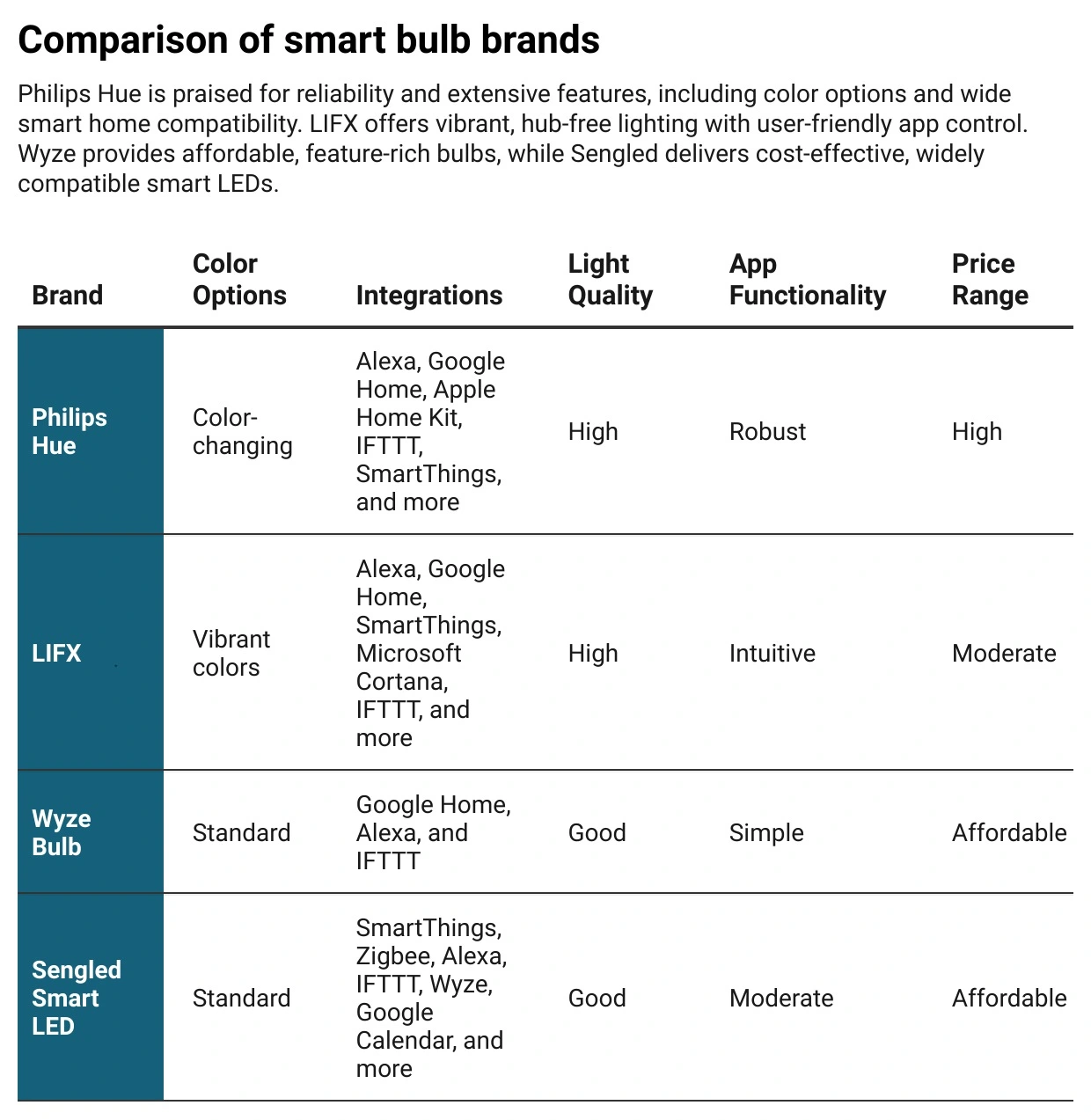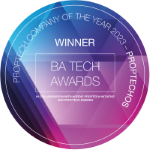For commercial real estate owners and tenants alike, the adoption of smart lighting systems is a key factor in creating an adaptable space that optimizes the comfort of its occupants. These systems can intelligently respond to variables such as occupancy and natural light levels. This enhances energy efficiency while providing a personalized lighting environment. This article covers how you can best use smart lighting systems in your commercial real estate properties.
This is how a smart lighting system can increase the experience
A smart lighting system provides a seamless and intuitive experience that transcends mere illumination. Smart lighting systems do more than light up spaces; they enhance the tenant experience, improve energy efficiency, and contribute to the overall ambiance of commercial spaces.
Benefits of automated lighting controls
Automated lighting controls are a central feature of smart lighting systems, offering several key benefits:
- Energy efficiency: Automated systems can adjust lighting based on occupancy or time of day, significantly reducing wasted energy. For instance, connecting your lights to occupancy sensors alone can reduce the energy consumption of your lighting system by well over 30% according to the Lighting Control Association.
- Enhanced comfort: Lighting can be programmed to mimic natural daylight patterns, providing a more comfortable environment that aligns with the human circadian rhythm. Automated lighting systems can also help improve natural light which enhances comfort and reduces electricity use for lighting by up to 70% according to the Institute for Research in Construction.
- Customization: Tenants can easily adjust the lighting to their preferences without manual intervention, whether for a presentation, a casual meeting, or focused work.
- Proactive maintenance: Automated systems can report on bulb life and energy consumption, allowing for proactive maintenance and insights into usage patterns.
How a smart IoT-connected bulb works
Smart IoT (Internet of Things) connected bulbs are at the heart of a modern smart lighting system. These bulbs connect to a network, often via Wi-Fi or a dedicated hub, allowing users to control them through smartphone apps or voice commands. Beyond just remote operation, this connectivity also enables the smart capabilities of IoT-connected bulbs. But, how do they actually work?
Embedded with sensors and microprocessors, smart bulbs can detect environmental conditions such as the occupants of a building or the level of natural light. This allows them to autonomously adjust their output to maintain optimal lighting conditions, conserve energy, and provide a comfortable environment that aligns with the human circadian rhythm. For example, they can dim when a room is empty or brighten when it’s occupied, and they can even simulate natural daylight to help regulate sleep and wake cycles.
While these features are great, their integration capabilities make smart IoT-connected bulbs truly powerful. They can work in concert with other smart devices within a building, creating a cohesive and adaptable lighting system. Such systems can enhance security by responding to alarms or contribute to energy management by adjusting lighting based on HVAC loads.
The cost-effectiveness of LED smart lighting per watt
Switching to LED smart lighting is a forward-thinking decision for any commercial real estate owner. The cost-effectiveness of LED smart lighting comes from the long-term savings it offers per watt when compared to traditional lighting methods. LED bulbs consume significantly less power — often up to 90% less than incandescent bulbs according to the United States Department of Energy. This reduction in energy consumption and maintenance needs translates to lower utility bills and fewer bulb replacements.
How can commercial real estate benefit from it?
Simply put, implementing LED smart lighting can significantly cut the costs of any commercial real estate property. On top of reducing your electricity bill, LED lights also lower your maintenance cost. Lasting up to 25 times longer than traditional light bulbs, maintenance crews rarely need to waste time walking across a building to change a single bulb.
Improve your tenant experience – voice control and platform
With voice control and smart device apps, tenants can change the lighting without having to move or press a button. Since 62% of Americans already use voice assistants, your tenants will already be used to using voice control for their lights.
Lighting can integrate with smart platforms bringing it into a broader ecosystem capable of setting scenes, adjusting to schedules, and even reacting to other smart devices or systems in the building. This level of customization not only improves the quality of life for tenants but also positions a property as a cutting-edge space designed for the future.
Customize your smart building for the best effect
You can set up LED smart lighting to work just right for every part of your building. Whether it’s the lobby, offices, or meeting rooms, each place can have its own perfect lighting. Smart sensors in the lights can even tell when a room is empty or full and change the brightness accordingly. This smart setup means every space is always lit up just right, saving energy while creating an optimal environment for tenants.
ProptechOS partners Flowscape and Helvar can help you customize your smart buildings. Flowscape provides a central platform for all tenants to book rooms, find colleagues, and find their way throughout a building. Using the usage insights provided by Flowscape, you can fully customize your lighting system to the actual uses of your commercial buildings with Helvar’s intelligent lighting systems.
Different smart lighting systems and types
Smart lighting systems have transformed how we light up our spaces. They offer more than just illumination; they bring customization, control, and efficiency to a new level. Some systems are designed for easy use and plug into existing light fixtures. In contrast, others are more complex and can be integrated into a building’s automation system for advanced control.
The best smart bulbs on the market and what the experts say
Some of the best smart bulbs on the market include:
Requirements for illumination in commercial buildings
Proper illumination is essential for creating a safe and productive work environment. To optimize the lighting in your commercial buildings, consider the following:
- Brightness levels: Different areas within a commercial building will require different brightness levels, measured in lumens. Workspaces generally need brighter light, while lounge areas can have softer lighting.
- Color temperature: The warmth or coolness of the light, measured in Kelvins, is important for comfort and mood. Cooler temperatures are better for concentration in workspaces, while warmer lights are more relaxing.
- Energy codes and standards: Many regions have specific codes and standards that dictate the minimum energy efficiency and lighting controls for commercial spaces. In the United States, OSHA mandates lighting requirements based on the room type. For most room types, OSHA requires 5 lumens with first-aid stations requiring 30 lumens.
- Occupancy: Sensors and timers can help adjust lighting based on the presence of people in a room, ensuring that energy isn’t wasted on empty spaces.
- Emergency lighting: For safety, commercial buildings must have lighting systems that will stay on or turn on automatically during a power outage.
Get started and how to best implement lighting systems
Whether you’re updating an existing building or developing a new project, there are steps you can take to ensure that your lighting system meets your current and future needs.
Retrofitting your property and controlling your smart building
Retrofitting an existing property with smart lighting involves replacing outdated fixtures and systems with modern, energy-efficient technology. Here’s how to get started:
- Assessment: Evaluate your current lighting system to understand what you have and need. Consider the age and condition of your lighting fixtures, control systems, and wiring.
- Planning: Determine your goals for smart lighting. Do you want to reduce energy costs? Improve lighting quality? Incorporate automation? Understanding your objectives will guide your choices.
- Product selection: Choose smart lighting products that fit your needs. Look for LED lights, smart bulbs, and control systems that offer the desired features, such as dimming, color change, or motion detection.
- Control systems: Decide on a control system that can manage your smart lighting. This could be a centralized system that controls all the lights in the building or a more distributed system where each light can be controlled individually.
- Installation: Work with a professional to install your new lighting system. Proper installation is key to ensuring that everything works as it should and is safe.
- Integration: Integrate your smart lighting system with other building management systems, if applicable.
- User training: Educate the building occupants on how to use the smart lighting controls by providing information on how to adjust settings for individual comfort and how to ensure that the system is used to its full energy-saving potential.
Does Matter really work? Open-standard is the future
The promise of Matter as an open-standard protocol for smart home devices is clear: it aims to ensure interoperability, reliability, and security across various platforms and devices. However, as with any significant technological shift, challenges and growing pains are inevitable. During its roll-out, Matter received some scathing reviews due to reliability issues, integration problems, and overall frustration.
Despite the difficult roll-out, open standards are still the future of smart technology. Broadening your choice of compatible devices while enabling support for future products delivers significant value to consumers. And this value only comes from open standards.
ProptechOS is invested in open standards for all commercial real estate data and devices. As a platform, ProptechOS aims to integrate all of your PropTech solutions into a unified environment. This enables you to view and analyze the entirety of your real estate data, driving new insights and improved digital twins. You can try ProptechOS for free today to future-proof your systems with open standards.

Dr. Erik Wallin
Chief Ecosystem Officer, and founder of ProptechOS and RealEstateCore is recognized as a leader in Building Operating Systems (BOS) and making the buildings of the world smarter. He holds an MSc and a Ph.D. in Media and Computer Science from KTH Royal Institute of Technology.
Read his full bio and information here.


